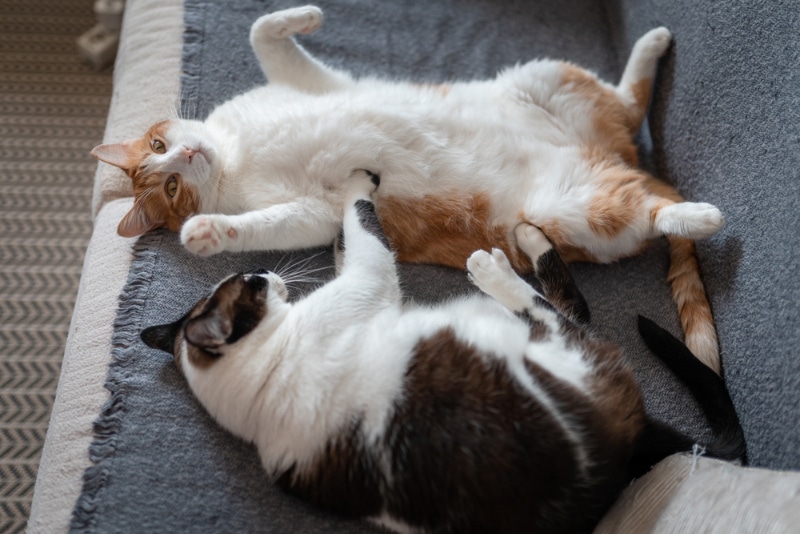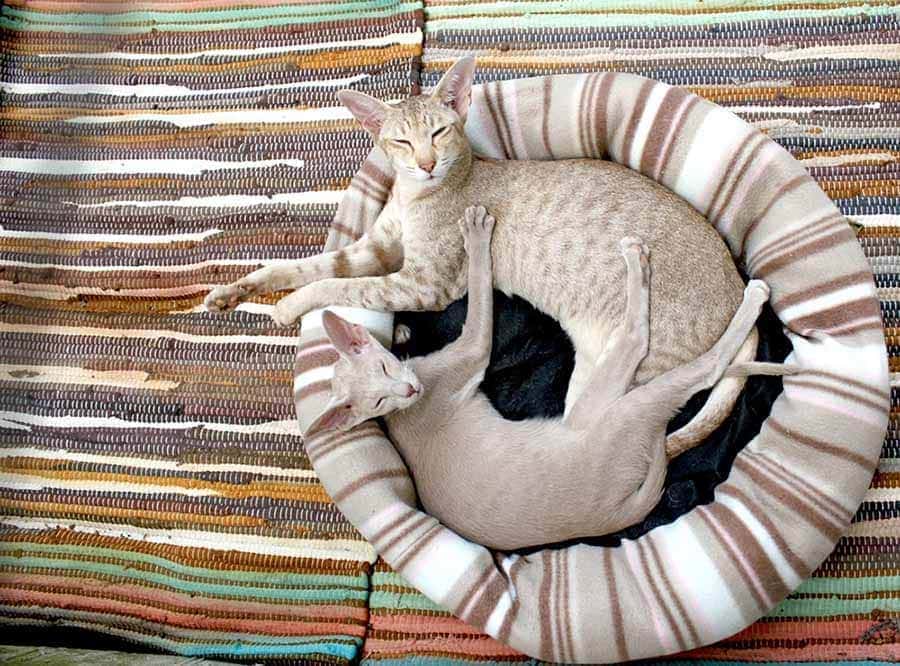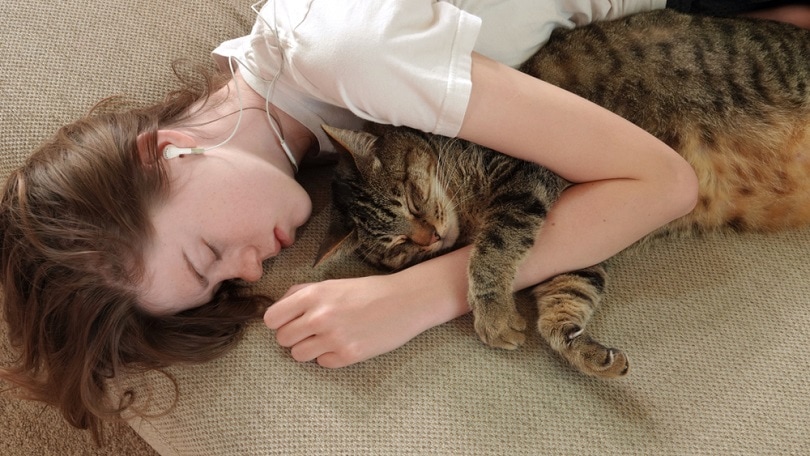Cats, although seemingly aloof, are social creatures that need to be around other cats or animals to live happy lives. Most cats love being around their humans and the attention they get, but there’s one question many cat owners have when they have just one cat: Is it OK, or is it cruel to have only one cat? It’s an important question that seemingly has a huge impact on your cat’s life. Yes, it is OK to have just one cat. As long as the cat gets enough attention and love from its human family, they will be just fine and do well without any other cats around.
Many cat experts, however, still recommend getting two cats instead of one when you adopt a cat. There are several reasons for this, which we discuss below. If you’re curious to find out more about whether two (or more) cats are better than one, read on!
The 4 Reasons Having Two Cats Is More Beneficial
Aside from doubling the food that you’ll need to purchase and the number of times that you’ll need to empty the litter box, having two cats isn’t much different from having one, at least for you as an owner. For a cat, however, having another cat around can provide several excellent benefits, both physically and mentally, including the following:
1. More Exercise
One bored and lonely cat will exercise less than two cats that can play, run, fight, and otherwise keep each other excited and moving around.
2. More Mental Stimulation
Even if you adore your cat, spending 24 hours a day with them is probably not feasible, which means less mental stimulation for your feline friend. However, if there’s another cat around, both cats will be much more stimulated.

3. Faster Potty Training
One kitten might have trouble learning how to go potty in the litter box. If there are two kittens and one gets it faster, the second will usually follow suit. This can cut down on potty training time significantly. It also helps in other ways, as one kitten shows the other “the ropes.”
Having two cats isn’t much different or more expensive than only having one. You’ll need two litter boxes, but the cats can share toys and climbing equipment like cat trees.

 Do Cats Get Lonely?
Do Cats Get Lonely?
While it’s difficult to say exactly what your cat feels, researchers believe cats can feel lonely. They lose their appetite, engage in destructive behavior like scratching furniture, or go potty outside their litter box. These actions are the actions of a lonely cat, which can almost always be fixed by introducing another feline.
Is It Cruel to Only Have One Cat?
Like all social animals, cats need constant interaction and engagement with other creatures, including humans, cats, and other pets. Millions of people worldwide have only one cat, and they do perfectly fine with the right amount of mental stimulation. As long as you interact with your cat daily, give them some TLC, and ensure you’re there if they need you, keeping a single cat isn’t cruel and can be very rewarding.

Are Cats Happier in Pairs?
Although the average cat will do just fine on their own, it’s been shown that two cats living together are usually happier and more well-adjusted than one cat living alone. Cats that have bonded will support and nurture each other, keep each other company, play together, soothe each other when needed, and are much more satisfied with their lives than single cats.
What Is Single Kitten Syndrome?
When you adopt a cat from most shelters, they’ll ask you to adopt two. The reason they do this is to prevent single kitten syndrome. Single kitten syndrome happens when a kitten is raised with other kittens and its momma, socializing with them for many weeks. Then, when they get adopted by themselves and have to live “alone” with their new humans, where they can become stressed out, aggressive, anxious, and worse. In other words, single kitten syndrome is something to beware of when adopting a kitten and one reason you should consider adopting two instead.

How to Know if Your Cat Needs a Companion
It’s not always easy to know if your cat feels lonely and needs a companion. However, cats show signs of loneliness and wanting a friend in some of their behaviors. If you see them doing the things on the list below, chances are your furry buddy needs a companion of their own.
- Being more clingy than usual
- They excessively self-groom
- They start missing the litter box on purpose
- Their eating habits change drastically
- They have a change in sleeping habits
How Can You Tell if It Will Be Difficult to Have Another Cat in the House?
Most cats will get along well with other cats as long as they are socialized well and have spent sufficient time together. However, a few factors can make it difficult to keep another cat.
- Your cat doesn’t get along with other cats in the neighborhood
- Your cat is older and set in its ways
- Your house or apartment is small
- Your cat is still intact

What Should You Do if You Have Two Cats and One Dies?
If you have two cats and one passes away, your first impulse might be to get another cat immediately. That, however, isn’t necessary and can impede your surviving cat’s grieving process. It’s better to wait a few weeks or longer before introducing a new cat into your home.
Final Thoughts
Yes, it is OK to keep one cat, but more people are saying that two cats are better than one. It’s known that two cats will support each other, play with each other, and give each other the mental and physical stimulation they both need, especially if their owner is always busy. Cats are social animals and, if raised with another cat, will be more content, happy, and satisfied than a single cat, at least in most cases. In other words, while cats can live alone in a home and do just fine, having another cat in your house to keep them company is recommended. With two cats around, you’re sure to have double the feline fun!
Featured Image Credit: Wanwajee Weeraphukdee, Shutterstock
Contents
- The 4 Reasons Having Two Cats Is More Beneficial
- Do Cats Get Lonely?
- Is It Cruel to Only Have One Cat?
- Are Cats Happier in Pairs?
- What Is Single Kitten Syndrome?
- How to Know if Your Cat Needs a Companion
- How Can You Tell if It Will Be Difficult to Have Another Cat in the House?
- What Should You Do if You Have Two Cats and One Dies?
- Final Thoughts



 Do Cats Get Lonely?
Do Cats Get Lonely?






